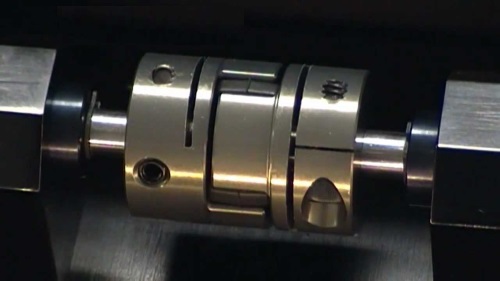Oldham coupling: This is a good all-around flexible coupling when you’re looking for a coupling to provide homokinetic transmission, and to exert low reactive forces under large radial misalignement.
Oldham/Universal coupling: This coupling is similar to an Oldham coupling and has many of the same advantages. It differs by accommodating larger angular and radial misalignments like a universal joint.
Block coupling: Based on an old design, block couplings have been modernized with updated materials and precision. They are commonly used in harsh or dirty conditions.
Jaw Coupling: Also known as a spider coupling, this is a common choice with designers as a general flexible coupling, despite the fact that it’s not very flexible. It doesn’t accommodate very large misalignment and it exerts strong reactive forces when two shafts are misaligned. The primary purpose for selecting a jaw coupling is its torsional dampening capabilities.
Universal Joint: Universal joints are used as torque transmitting linkages over relatively large angular and radial misalignments.
Rigid Coupling: This coupling makes the most sense when you’re expecting little or no shaft misalignment. The coupling has a low moment of intertia and is characterized by its torsional rigidity.
